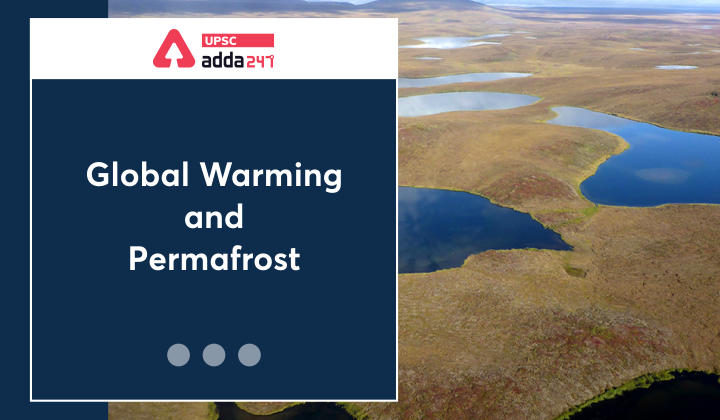Table of Contents
Relevance
- GS 1: Geographical features and their location-changes in critical geographical features (including water-bodies and ice-caps) and in flora and fauna and the effects of such changes.
Context
- Recently, IPCC has released a report in which it has warned that increasing global warming will result in reductions in Arctic permafrost and the thawing of the ground is expected to release greenhouse gases like methane and carbon dioxide.
Permafrost: What is it?
- It is defined as ground—soil, rock and any included ice or organic material—that remains at or below zero degree Celsius for at least two consecutive years.
- Permafrost is spread across an area of over 23 million square km, covering about 15% of the land area of the globe.
Immediate effects of melting of permafrost
- The very first and immediate impact will be on the cities were roads and buildings are constructed on permafrost. For example, Russian railways.
- In the northwest of Canada, a short section of the road is there where it has been necessary to chill the ground to make the foundation of the road colder than it is, so as to preserve the permafrost.
- Permafrost is the reservoir of organic material. Upon thawing, this material will become available for microbiota to break down.
- The biota will release carbon dioxide, and in others release methane which is about 25 to 30 times more potent as a greenhouse gas than carbon dioxide.
- The total quantity of carbon that is now buried in the permafrost is estimated at about 1500 billion tonnes and the top three meters of the ground has about 1000 billion tonnes.
- The world currently emits around 10 billion tonnes of carbon a year into the atmosphere.
- In this scenario, if the permafrost thaws and releases even 1% of the frozen carbon in any one year, it could nullify anything that we do about industrial emissions.
Forest fires
- This year Russia witnessed a forest fire whose total area was of the size of Portugal.
- Usually, after a fire, it is expected that forest will grow back in the next 50-60 years.
- This restores the carbon stock in the ecosystem.
- But in the tundra, the peat is where the organic material is and this takes a very long time to accumulate.
- So, when peat is burned and is then released into the atmosphere, then it would take centuries to restore that carbon stock at ground level.
Can permafrost lead to pandemic?
- We need more studies to understand emissions caused by permafrost.
- Permafrost has many secrets, which is evident from the fact that we have recently found mammoths in the permafrost in Russia.
- Some of these mammoth carcasses, upon degrading, may reveal bacteria that were frozen thousands of years ago.
- However, it is not possible to say whether these bacteria will be lethal or not.
- Also, the number of diseases that are found in India is much greater than the number of diseases found in Greenland.
- The environment now is so much more suitable than during the Ice Age for not just human life, but also the evolution or development of different viruses and bacteria.



 TSPSC Group 1 Question Paper 2024, Downl...
TSPSC Group 1 Question Paper 2024, Downl...
 TSPSC Group 1 Answer key 2024 Out, Downl...
TSPSC Group 1 Answer key 2024 Out, Downl...
 UPSC Prelims 2024 Question Paper, Downlo...
UPSC Prelims 2024 Question Paper, Downlo...
